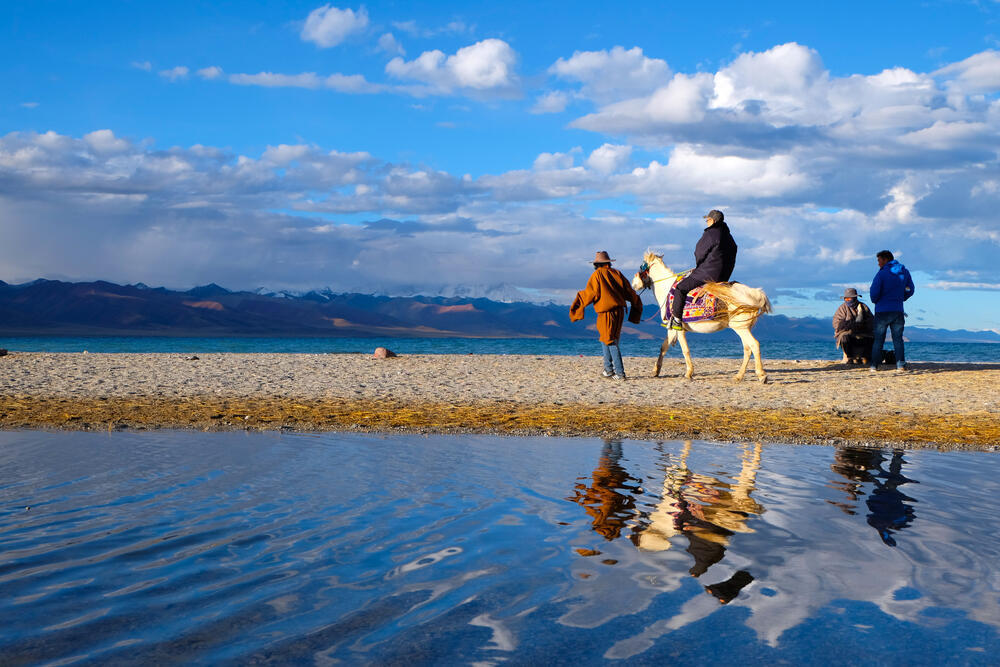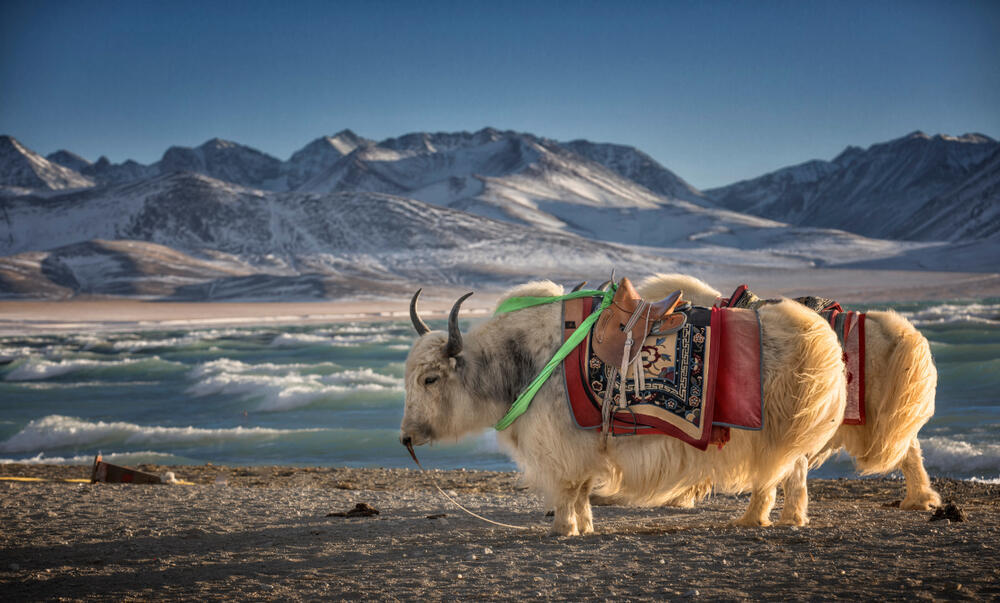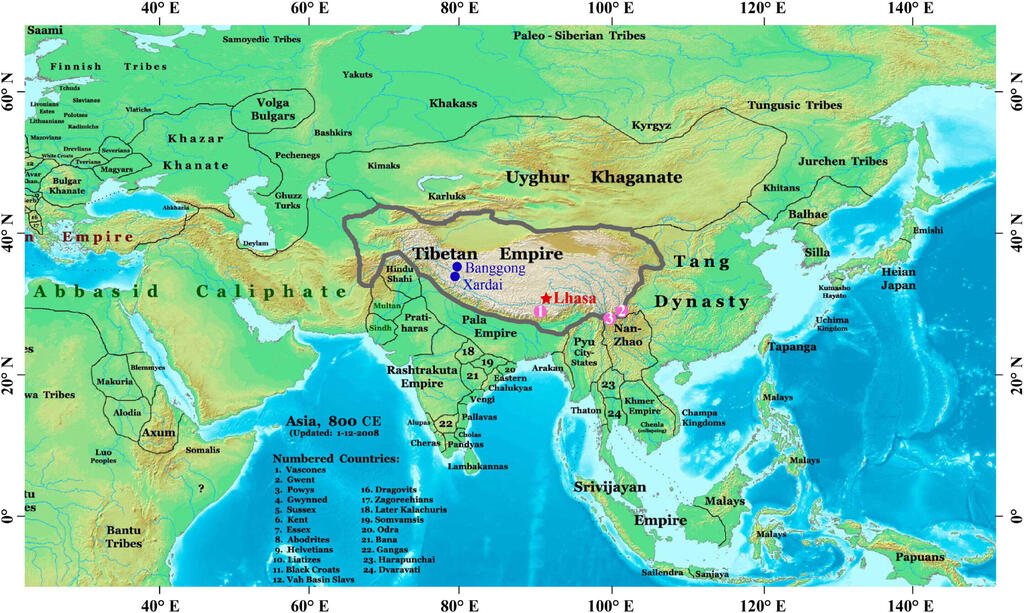Getting your Trinity Audio player ready...
Climate change played a pivotal role in the destabilization and eventual collapse of the Tibetan Empire in the 9th century, a new study has found.
More stories:
The study, led by scientists from the Chinese Academy of Sciences, involved an analysis of sediment cores from a Tibetan lake, also providing insights relevant to the region's contemporary population.
The Tibetan Empire was the highest empire in the world, as it was situated at an elevation of over 4,000 meters above sea level. It lasted from 618 to 877 CE and spanned an area estimated at around 4.6 million square kilometers – a vast region where approximately 10 million people lived—spanning from eastern and central Asia to northern India.
The Tibetan Empire’s flourishing under less-than-optimal conditions for population expansion, including hypoxia due to oxygen concentrations being 40% lower than at sea level, was a remarkable feat. However, the reasons for its collapse in the 9th century have remained a mystery and are subject to debate.
Now, it appears this mystery has been partially solved, thanks to the findings of the study published in the Quaternary Science Reviews journal. According to the study, environmental factors played a significant role in the downfall of the empire.
Dr. Zhitong Chen and his team from the Chinese Academy of Sciences’ Institute of Tibetan Plateau Research wanted to investigate how climate change contributed to the collapse of the Tibetan Empire around 1,200 years ago. They used paleolimnological evidence from sediment cores of Xardai Co, a lake that preserves remnants of single-celled microorganisms known as diatoms, which compose one of the world’s most common types of plankton.
Researchers identified a significant shift where plankton species that are typically associated with water currents near the lake's surface were replaced by benthic organisms that live close to the lake’s bottom, suggesting a transition to drier and less humid climate conditions, which led to a drop in the lake's water level.
In this context, when the lake levels in Tibet were high, it indicated warm and humid climate conditions that prevailed during the peak of the Tibetan Empire (around 600-800 CE), in contrast to the harsher conditions and drought that occurred during the empire's decline (around 800-877 CE) when water levels decreased significantly.
Dr. Chen and his team connected this research to a period of struggles in the Tibetan Empire that affected farmers and livestock, and social unrest, including religious and political challenges, which ultimately contributed to the ultimate downfall of the Tibetan Empire.
The Tibetan Plateau is highly sensitive to climate change due to its high elevation, with temperature and precipitation fluctuations varying significantly from the global average. The lake examined in the study is typically frozen from November to April, but experiences temperature and sediment shifts throughout the year, which have significant implications for the lake's water level and the organisms living within it.
The sediment cores extracted from the lake showed 160 diatom groups, according to the study. Before 800 CE, the diatom species was dominated by two planktonic forms, Lindavia radiosa and Lindavia ocellata. A turning point occurred around 800 CE when the benthic diatom species Amphora pediculus and Amphora inariensis increased in abundance, while the numbers of Lindavia radiosa and Lindavia ocellata decreased.
This trend continued until around 1300 CE when the lake’s water level began to rise again during the Little Ice Age. The study’s findings were also correlated with other paleoenvironmental indicators from across the Tibetan Plateau, confirming that climate changes during this earlier period were widespread across the region and not isolated to the specific lake examined in the study.
In fact, climate changes during this period had a significant impact not only on the people but also on agriculture and livestock, which were the dominant sources of income for residents of the empire. Crop cultivation in the Yarlung Zangbo River Valley and pastoralism in the Qangtang Plateau played crucial roles in Tibet's economy during the empire’s expansion.
As the empire expanded, weather conditions greatly influenced crop yields and the well-being of livestock, such as horses, goats and yaks, which were essential for trade. Therefore, abrupt climate changes over a period of 60-70 years affected agriculture and pastoralism negatively, leading to dire consequences for the population, creating food scarcity and damage to the economic prosperity of an empire heavily reliant on trade with other regions.
It appears that the empire began to bifurcate, leading to social unrest and an eventual civil war led by the followers of Langdarma (the last Tibetan emperor, assassinated in 842 CE), and the beginning of the Era of Fragmentation with uprisings against a vestige of Tibetan imperial rule and the rise of regional warlords. All of these factors ultimately led to the downfall of the Tibetan Empire.
Today, agriculture and pastoralism by livestock represent more than half of Tibet's annual income, emphasizing the crucial need for understanding climate change in order to ensure that Tibetan communities will be able to survive and even thrive.






